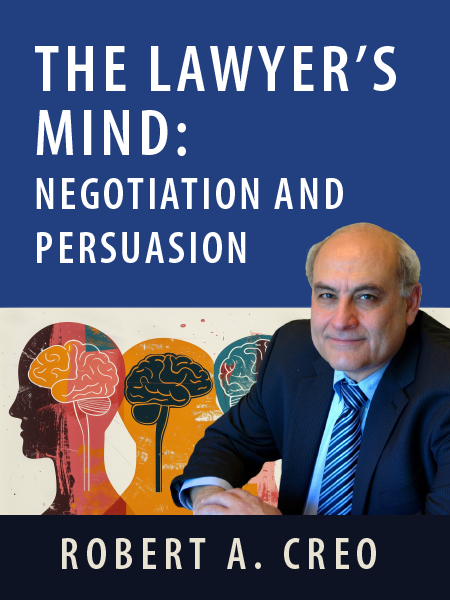
“Plans are worthless, but planning is everything.”
Dwight D. Eisenhower
Although representation in transactional work differs from being counsel in a claim or litigation, my experience as an advocate, mediator, and arbitrator has enabled me to recognize the commonalities between, and core skills inherent in, both forms of representation. There are, nevertheless, fundamental differences that often dictate strategy and tactics unique to the type of practice or matter.
Legal claims are subject to the jurisdiction of some tribunal where there is ultimately a procedure and a third party authorized to impose an answer or resolution to break any impasse. Claims subject to litigation almost exclusively focus on past transactions or behavior. An aggrieved party, including the state and the victim in criminal matters, must state a cognizable claim in a formulaic manner so that it is properly ushered through the litigation process. Procedural law and the maneuvering of counsel may be more determinative of outcome than the substantive law. When negotiations fail on a procedural matter, there is a well-understood path to follow for recourse. Many negotiations over process end with “I’ll see you in court” rather than in amicable resolution. There is no requirement that you persuade opposing counsel of anything during the course of the matter.
Interested in learning more? Check out Robert A. Creo and David Yusko’s ALI CLE upcoming webcast, Dealing with the Nightmare Client: Proven Strategies for Lawyers, on October 7, 2024!
Transactional lawyers, however, operate entirely without the benefit of an external authority to resolve conflict or break an impasse. The art of the deal is an apt description since transactions, like art, can be primitive, simple, complex, abstract, layered, textured, and multi dimensional, using a wide range of materials, techniques, shapes, and sizes. When at an impasse in the formation of a deal, transactional lawyers have only one “best alternative” to a negotiated agreement: Walk away. It is often simply a case of deal or no deal. Your client has lived without the deal and can continue to live without it. A bad deal can lead to ruin. The most difficult part for the client may be to abandon the sunken costs, including your fee, and move on. Best practice for transactional lawyers is to immunize the client up front to the possibility of the deal being killed because of a failure to reach acceptable economic terms or risks within client and lawyer tolerances.
At its core, transactional lawyering is a cycle of obtaining and analyzing information, deciding, and then attempting to persuade. The final phase of documenting the deal is in creating the language that expresses the intent of the parties while allocating risk of future contingencies and events, especially defaults on the contract.
In short, litigators live past narratives while transactional lawyers venture into the unknown future. Despite these opposing orientations, there are common ways and means to achieve effective bargaining outcomes. This article will address the preparation and self-control necessary for sound decisions and effective communication in negotiating a transaction or resolution of a case.
Interested in learning more? Check out ALI CLE’s upcoming webcast, Dealing with Difficult Counsel: Tactics for Handling “Bad” Behavior, on August 6, 2024!
BEFORE THE TABLE
Structure of the Negotiation
Negotiating with opposing counsel is often analogized to warfare in that there is significant preparation, reconnaissance, marshalling of resources, foray, propaganda, concession, minor exchange and inconclusive engagement, and, at times, an epic battle that turns the tide one way or the other. The lawyer-warriors generally engage with words, pictures, or avoidance. Silence, or ignoring an opponent, is a form of communication and a position. Words are transmitted orally, electronically (videos, tweets, emails, texts), or in the more traditional way: by letter and document.
Oral communications may be by telephone, voice message, video, face-to-face meetings or through an intermediary. A typical claim or transaction often involves most (if not all) of these forms of communication, although most lawyers prefer the basic telephone call over Skype or other visual electronic engagement. I have yet to have a lawyer during a call say, “Hey, let’s FaceTime!” My take on this is that most lawyers prefer to remain unseen for a variety of reasons, including not having to be constantly on guard and having the freedom to think and talk in private.
CLICK HERE to read the full article, which was originally published in ALI CLE’s The Practical Real Estate Lawyer.
To find our more about ALI CLE’s in-person courses or webcasts, or to check out on-demand CLE, click here.
